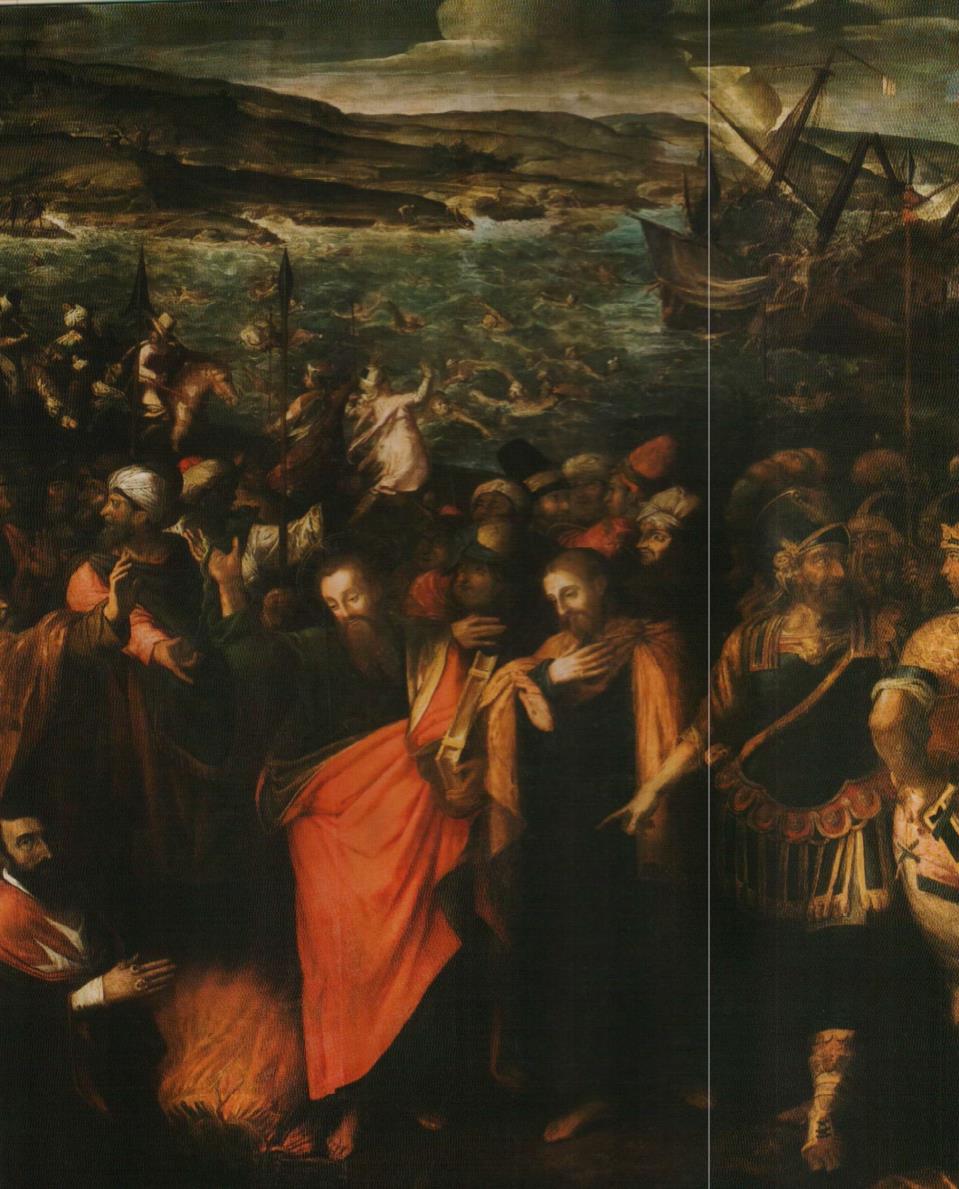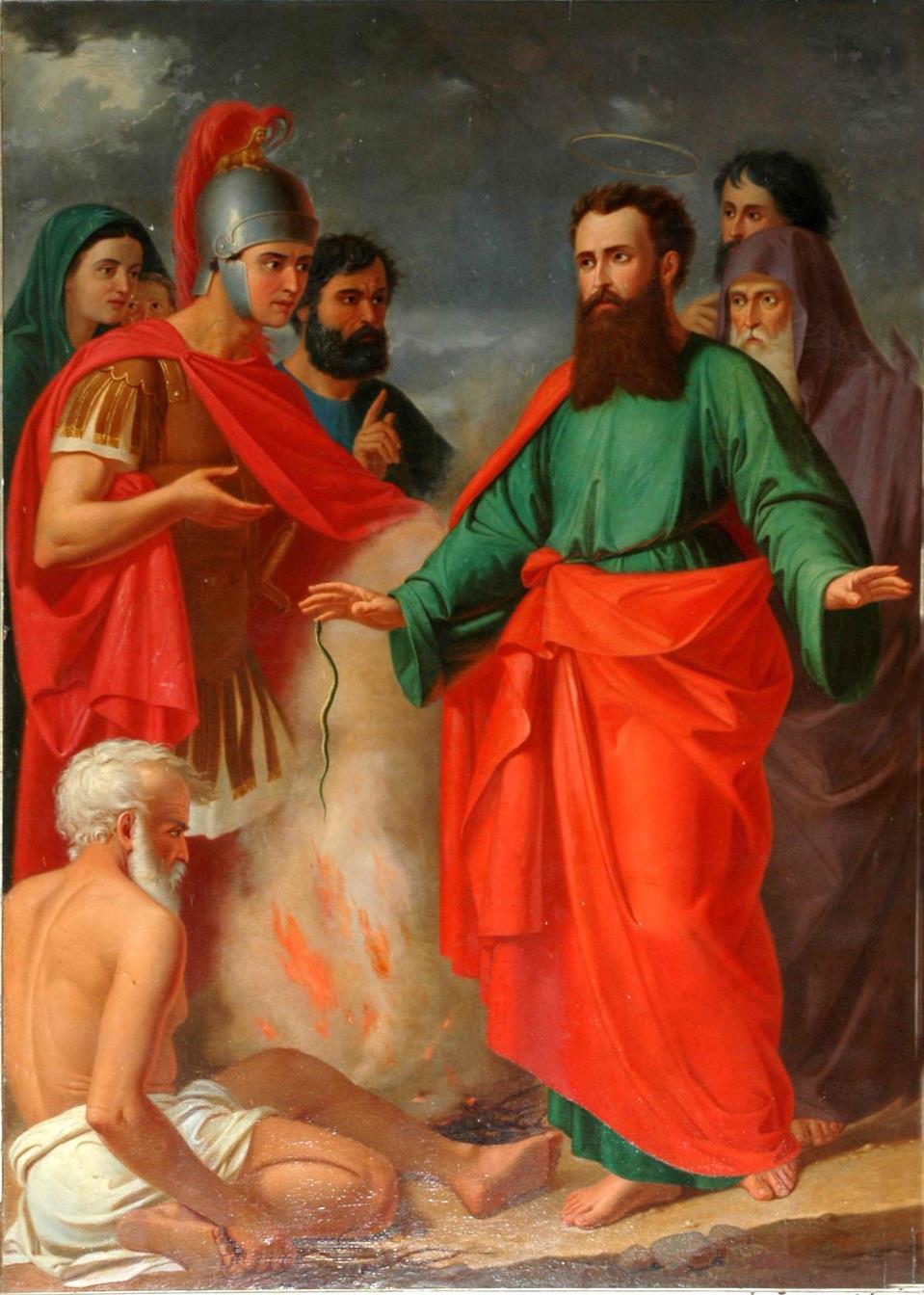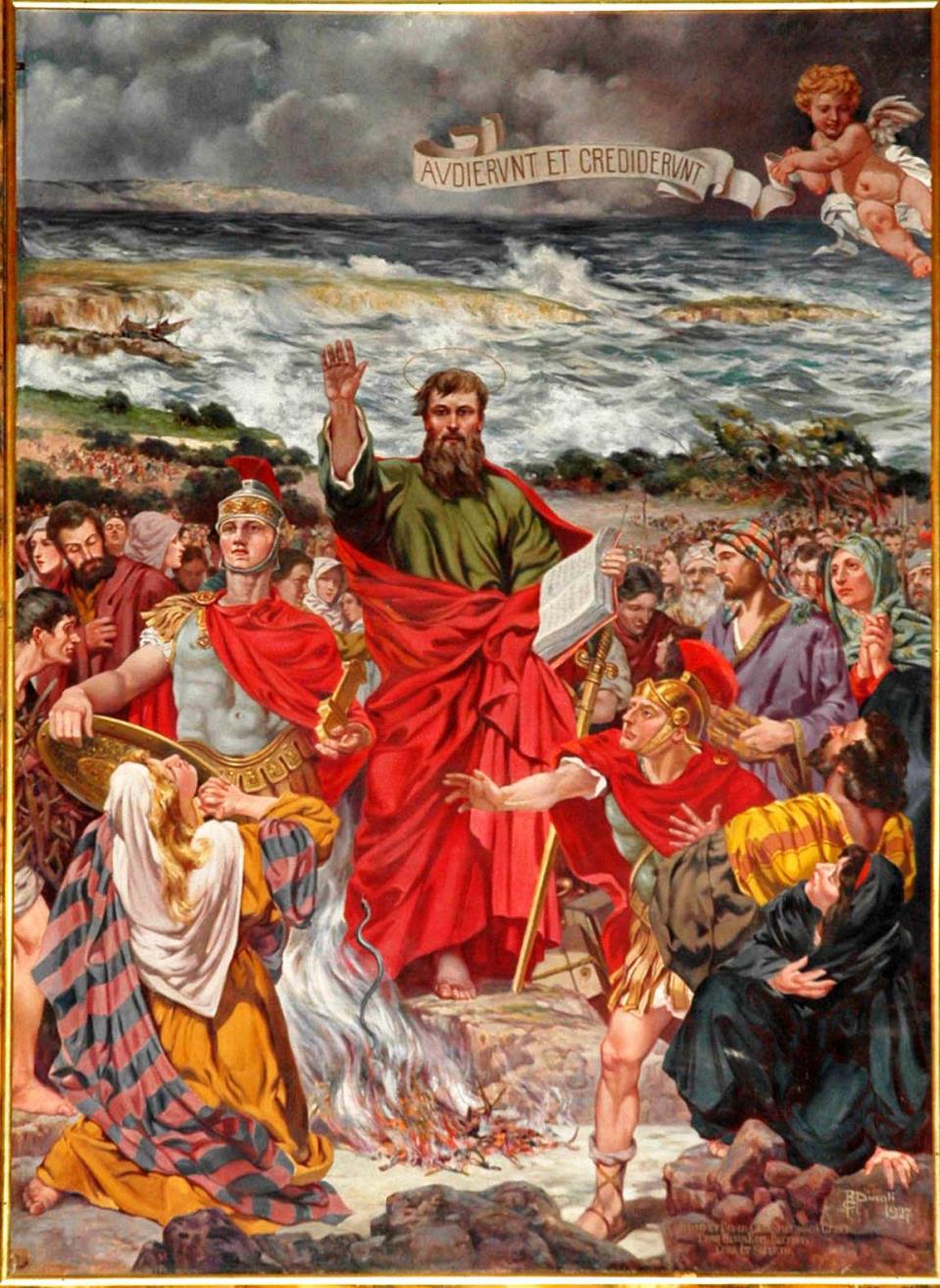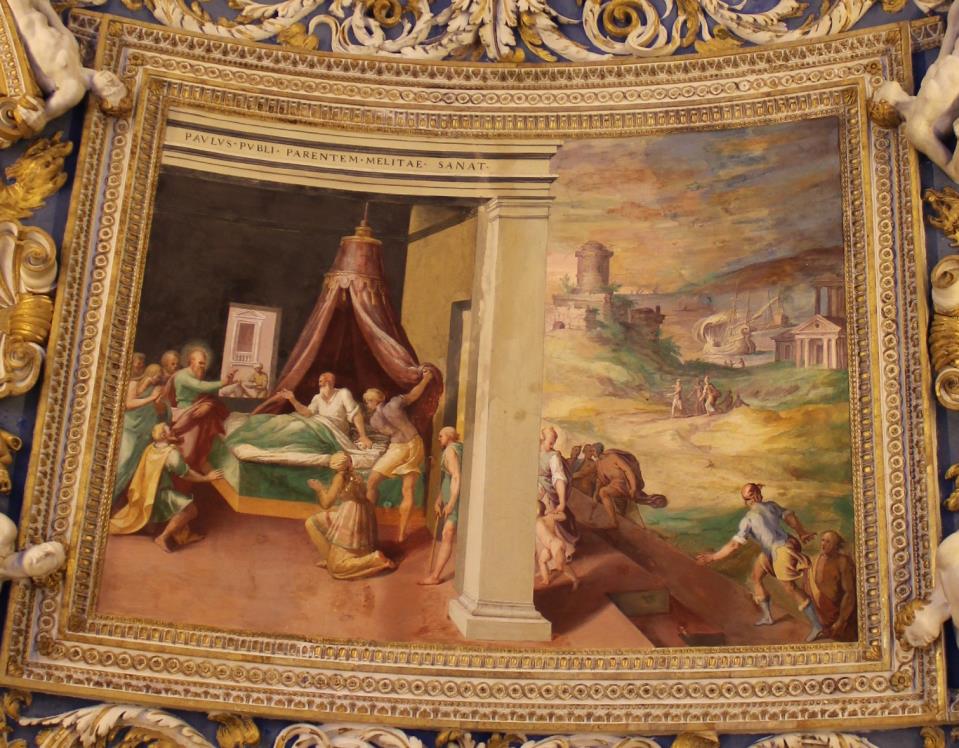Malta in Acts of the Apostles
It occurred during the Roman period; Malta had been part of the Roman Empire since 218 BC. It happened about AD 58/60. In the Acts of the Apostles it is narrated with incredible detail by someone who either had a first-hand experience on that fateful voyage, or had been told of how the events unfolded - before the ship, with St Paul and 75 men aboard, was caught in high easterly winds, rough seas and finally wrecked on the shores of our island in Chapter 27 (lines 27-44) - by someone who went through the ill-fated journey.
All men survived and swam ashore, and the inhabitants welcomed them; they eventually learnt the island was called Malta (Acts 28:1).
This breath-taking account had inspired artists who painted spectacular and dramatic scenes representing moments of the storm, the men swimming ashore, St Paul encouraging his fellow men aboard the ship combating the strong winds and raging seas, and especially the scene of the Apostle of the Gentiles shaking off the viper which emerged from the fire that the Maltese set up for the survivors to dry themselves and warm up around. The scene of St Paul putting his hands on St Publius' sick father and healing him, is not as popular. However, I encountered such an impressive painting in the ceiling of the Vatican Museum, too.

St Paul's Shipwreck church, in Valletta; altarpiece: 'Shipwreck of St Paul' by Matteo Perez d'Aleccio [Photo: Church Archives]
Contributions on the subject
It was during the 1990s that one day, while doing some research in the Biblioteca Universitaria of Turin, I encountered a reference to a manuscript [a 'codex' actually] in Latin - De insulis et earum proprietatibus by Florentine Domenico Silvestri, dating back to the early fifteenth century; it contains a collection of information - known in those times - about islands. It was written to sort of complement Giovanni Boccaccio's work De montibus, silvis, fontibus, lacubus, fluminibus, stagnis seu paludibus et de nominibus maris liber (c. 1373).
It contains several interesting notes about Malta and Gozo. In the text about Malta, Silvestri relates - in his own way - the account naturally known by many, of the storm and the shipwreck, and the viper's incident. [However, he says that St Paul healed Publius' brother, not father.]

St Paul's church in Marsalforn, Gozo; altarpiece 'Shipwreck of St Paul' by Giuseppe Bonnici [Photo: jjpzammit]
Text by Silvestri
The following is a translation of the original text, in Latin, which was done with the help of the late Latinist Rev Karm Bezzina.
'In that place the Alexandrine ship carrying the apostle Paul with seventy-six men on his way to Rome, ran aground after having been tossed by storms on the peak of those billows. Through Paul's prayers all of them swam safely to this island; only the ship was lost. Dripping with sea-water they rested on the shore, and to warm themselves, first they struck a spark out of flint and made a fire with the dry leaves put around as fuel; they readily created flames from tinder.
'But it happened that a snake hidden in the stalks, while escaping from the heat, attacked Paul's hand as he pressed down little bundles of shrub twigs. Paul shook it off into the fire.
'In fact, the inhabitants who were on the spot, not oblivious of his human nature, thought that he would immediately become swollen and die there and then, as usual. They blamed Paul with words saying that he was guilty of some crime since he had escaped from the danger of the sea and met a beast's bite. Moreover, when they saw that he was unhurt and suffered no harm, they cried out: "Unless God is here, he would have died." He performed many miracles for those who came together to him, while he warned them that he was not a god, but he was called God's messenger. He healed especially Publius' brother who was suffering from fever, stomach haemorrhage, and burning intestinal pain; Publius was the chief of the island.' [English translation of original text in Latin, in Biblioteca Universitaria, Torino, MS classified J.III.12; ff. 100v and 101r.]

St Paul's church in Munxar, Gozo; altarpiece by Roberto Caruana Dingli [Photo: jjpzammit]
Studi Magrebini
After tireless research on Silvestri, the codex and its history, and the contents, I wrote a paper 'Malta and Gozo in a fifteenth-century Codex', which was eventually published in the journal of the Università degli Studi (L'Orientale) of Naples [where I used to deliver lectures on the Maltese Language], Studi Magrebini [Vol XXIV, Naples 1997, pp. 39-67].
It was this passionate love for research that yielded satisfying treasures of manuscripts with linguistic and historical information about Maltese and Malta, and - related to this biblical episode - little known etchings and paintings depicting episodes in the life of St Paul.
Today - when the Church in Malta is celebrating the Shipwreck of St Paul - together with some paintings in Malta, I am sharing with the readers, some of these works of art which are found beyond our shores.

Hall of Maps, Vatican Museum, the Vatican, Rome; fresco: 'St Paul healing Publius' father' by Cesare Nebbia [Photo: Joe Zammit Ciantar]
[email protected].